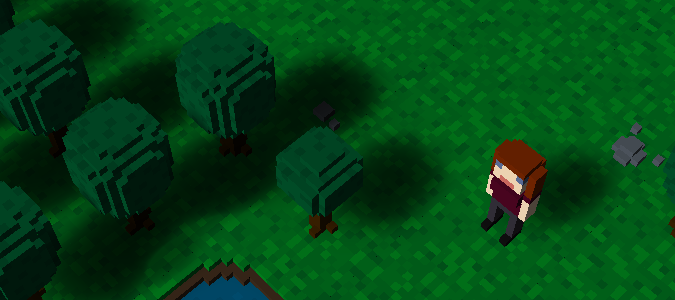Directional Light
A directional light behaves similar to a light source that originates from very far away (like the sun). Since a directional light does not have any specific point of origin, objects in the scene are not affected by their position, only by the direction of the light (which is adjusted by changing its horizontal angle and vertical angle). In the image below, the only light enabled is the map's directional light. You can easily judge the light's direction based the sides of objects receiving more light and the direction of the shadows.

The table below describes each of the settings that can be adjusted for a directional light.
| Settings | Description |
|---|---|
| Enabled | Determines the initial state of the light. You can use the Set Directional Light Enabled function to change the state of a map's directional light via scripting. |
| Color | Color of the light emitted. You can use the Set Directional Light Color function to change the color of a map's directional light via scripting. |
| Horizontal Angle | Determines the horizontal component of the light's direction, for example whether the light is pointing east vs. west. If shadows are enabled, this setting affects their direction. |
| Vertical Angle | Determines the vertical component of the light's direction, for example how high the “sun” is in the sky. If shadows are enabled, this setting affects their length. A value of 90 degrees means the light is pointing straight down. |
| Shadows Enabled | When enabled, the directional light will cause entities in the scene to cast shadows. |
| Shadow Darkness | Determines the darkness of shadows, with 100 being the darkest. |
| Shadow Blur | Determines the amount of blur applied to shadows, with 4 having the most blur applied. |